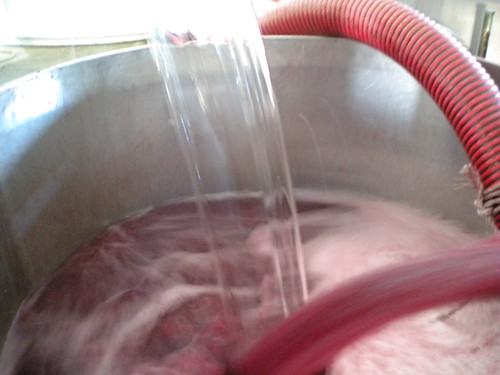 One of the crucial questions to perfectly understand the Port Wine industry is the benefício system. Due to its huge complexity, the benefício is almost all the time a thorn in the side of those who are not from the Douro but want to know how things are made here. Lets try to put this in words.
One of the crucial questions to perfectly understand the Port Wine industry is the benefício system. Due to its huge complexity, the benefício is almost all the time a thorn in the side of those who are not from the Douro but want to know how things are made here. Lets try to put this in words.
In 1756, Marquês de Pombal delimited for the first the Douro wine region, trying to preserve the quality and genuineness of the wine produced. Later, in 1932 Casa do Douro, an association of Douro vine growers, had as mission to register all the parcels of vines in the Douro. Then, emerged the question of how to preserve the quality and control the quantity of Port Wine produced by farmers. Later, in 1948, with data collected in the previous decades and with information about quantity and quality of different zones across the Douro valley, it is instituted a methodology to classify all the parcels, based in 3 main criteria: soil, climate and cultural conditions. Each of these three criteria are then divided in 4 parameters. This methodology is known and Moreira da Fonseca pontuation system.
Soil: type of soil; rockiness; productivity; steepness.
Climate: location; altitude; protection; exposure.
Cultural conditions: varieties; vine training; age of the vineyard; vine density
Each vineyard gets then a punctuation for each of the parameters and the sum of the total points achieved for all criteria determines the rating of the vineyard.
- A – more than 1200 points
- B – from 1001 to 1200
- C – from 801 to 1000
- D – from 601 to 800
- E – from 401 to 600
- F – from 201 to 400
- G – from 1 to 200
- H – from -200 to 0
- I – from -400 to -201
The total annual quantity of Port Wine produced is determined by the IVDP – Port Wine Institute and is highly related to sales of Port Wine and stocks changing. If sales go up, the total quantity will increase and the opposite if sales drop.
Quantity of must to fortify, in liters per hectare, in 2010
- A – 2.043
- B – 2.010
- C – 1.859
- D – 1.818
- E – 1.573
- F – 684
- G – 0
- H – 0
- I – 0
In 2010 the total quantity of Port Wine produced was 60.500.000 liters.
The remaining grapes that are not used for Port Wine, after achieving the benefício quota, are used for Douro wine. In the past, the best grapes of the vineyard were used for Port production. Nowadays, we find a balance using the best grapes for limited quantities of Port and Douro wines.
So making a long story short, the parcels of the Douro demarcated region are all classified with a grade that will determine the quantity of Port Wine that can be made from each parcel, depending on the annual volume allowed by the IVDP, which takes in consideration the sales and remaining stock of previous years.
Due to its complexity, I am sure that this post did not clarify all your questions about the beneficio system. So please feel free to leave your comments and so I can answer your questions and further questions our readers may have.
Oscar


 One of the crucial questions to perfectly understand the Port Wine industry is the benefício system. Due to its huge complexity, the benefício is almost all the time a thorn in the side of those who are not from the Douro but want to know how things are made here. Lets try to put this in words.
One of the crucial questions to perfectly understand the Port Wine industry is the benefício system. Due to its huge complexity, the benefício is almost all the time a thorn in the side of those who are not from the Douro but want to know how things are made here. Lets try to put this in words.